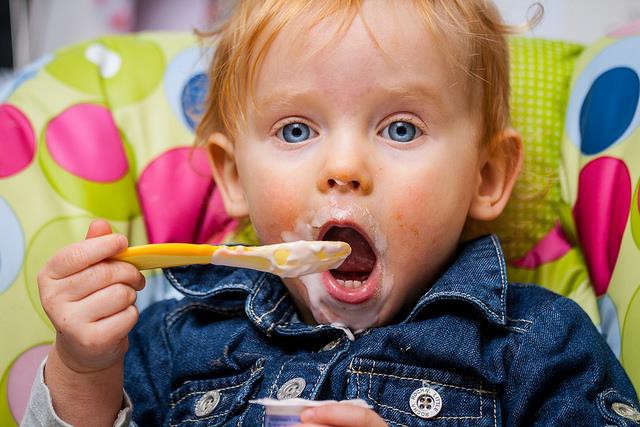23 Fine Motor Skills
More exact movements of the feet, toes, hands, and fingers are referred to as fine motor skills (or small motor skills). These include the ability to reach and grasp an object in coordination with vision. Newborns cannot grasp objects voluntarily but do wave their arms toward objects of interest. At about 4 months of age, the infant is able to reach for an object, first with both arms and within a few weeks, with only one arm. Grasping an object involves the use of the fingers and palm, but no thumbs.
Use of the thumb comes at about 9 months of age when the infant is able to grasp an object using the forefinger and thumb. This is known as the pincer grip. This ability greatly enhances the ability to control and manipulate an object and infants take great delight in this newfound ability. They may spend hours picking up small objects from the floor and placing them in containers. And as those objects will often next go into the mouth, caregivers must be vigilant about keeping items small enough to be choking hazards out of reach of little fingers. By 9 months, an infant can also watch a moving object, reach for it as it approaches and grab it. This is quite a complicated set of actions if we remember how difficult this would have been just a few months earlier.[1]

Physical Fine Motor Milestones
While fine motor skills are slower to develop (in accordance with proximodistal development), pretty remarkable progress is made in fine motor development during the first two years. As stated above, in the first few years of life children go from having no intentional fine motor control to being able to manipulate objects to play and learn, as well as beginning to care of themselves. The following is a table of the major milestones in fine motor development.
|
Typical Age |
What Most Children Do by This Age |
|
2 months |
|
|
4 months |
|
|
6 months |
|
|
9 months |
|
|
1 year |
|
|
18 months |
|
|
2 years |
|
- Children’s Development by Ana R. Leon is licensed under CC BY 4.0 ↵
- Developmental Milestones by the CDC is in the public domain ↵

